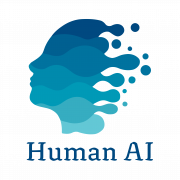Cognitive biases
The human brain – experts say – is capable of processing 11 million bits of information per second, but our conscious mind is only able to handle 40 to 50 bits of information per second. For this reason, our human brain often makes use of cognitive shortcuts, shortcuts that can lead to implicit and unconscious biases.
What is cognitive bias?
The concept of cognitive bias was introduced by Israeli psychologists Kahneman and Tversky in 1972. Daniel Kahneman – Nobel Prize winner in economics for his pioneering work in psychology on the rational model of decision-making – presented for the first time his study of the brain explaining two systems that model how we think.
In Think Fast, Think Slow, Kahneman explains that system 1 is fast, intuitive and emotional, while system 2 is slower, deliberative and logical. The impact of loss aversion and overconfidence on business strategies, the difficulty of predicting what will make us happy in the future or the profound effect of cognitive biases on everything we do, They can only be understood if we understand how the two systems work together in making our judgments and decisions.
Cognitive biases are mental mechanisms that facilitate the processing of information when making judgments and making decisions. Our brain uses shortcuts and simplifications to deal with the vast amount of information we face on a daily basis. The probability that some cognitive bias influences our behavior is high and usually occurs naturally.
Advantage or disadvantage?
Our brain is not as rational and objective as we like to believe, we do not keep all the information of what we see or think, and every time we remember we activate mental and narrative processes that can change our memories.
We use biases and heuristics to make decisions influenced by our habits, experiences, intuitions and emotions. Our memory is selective. We often attribute more weight to facts and data connected with emotions: “People will forget what you said, they will forget what you did, but they will never forget how you made them feel” – Maya Angelou.
Our brain is not a processing machine that rewards accuracy, but rather adaptation. It prefers to make cheap mistakes, rather than to do or stop doing something that involves a high cost. In addition, cognitive resources are limited, so our brain uses easy and automatic shortcuts and processing methods to make quick decisions. At first glance it may be negative, but the bias function is basically adaptive. We’re not 100% targets, we’re not machines. The biases are a reflection that we are humans.
Biases in the context of people management
How can biases affect people’s selection, evaluation and development?
The selection and evaluation processes are full of decision-making. We analyze different profiles, curricula, extract the necessary information, conduct interviews, conduct tests and evaluation tests. These allow people to know better when selecting, evaluating or planning talent development programs. Precisely some of these contexts are particularly vulnerable to cognitive bias due to these factors:
- The information provided on which they have to make the decision is limited, lack knowledge of their personal context.
- There is a time pressure in which those evaluated must respond and those responsible must act.
Therefore, when information is limited or ambiguous, and there is pressure or urgency over time, biases act with greater influence. To this is added the stereotypes unconsciously, influence the perceptions of the evaluator; and at the same time the evaluated responds with response biases.
Often, the response bias may not be intentional, there may be other simple reasons: such as the formulation of questions, the personal situation of the respondent… In any case, the result can be a set of ambiguous and subjective data. It is important to know when a bias is affecting us so that it does not alter our quality as professionals, making us make decisions not very wise. Therefore, the lower the cognitive biases, the more honest and reliable the information obtained.
Is it possible to eliminate or reduce biases?
In order to guarantee the reliability of the results, it is essential first of all to be aware of the existence of biases in the application of evaluations and tests, both by the evaluator and the evaluated. But is there any way to reduce or even eliminate the risk of bias? One way is to design the tests as objectively as possible, making more accurate and reliable information possible.
But can we avoid biases? Not humanly. Cognitive biases are unconscious and are an inherent part of our thinking. At this point, technology, specifically artificial intelligence, can be, and is, a useful and valuable tool to help us deal with human biases in the field of personal knowledge, reaching more objective and reliable conclusions regarding our abilities, competences and abilities.
The advantage of AI is that we can program it in such a way that it fits specific requirements, being able to be audited and eliminating the human bias of response, in particular the bias of self-perception and social desirability.
Human AI and the biases
In Human AI, we have proven this: if you ask a sample of 291 people who evaluate how orderly and modest they are, most will answer in a positively biased way, with a high score.


In our perception of ourselves and our behavior we tend, systematically, to make interpretations that allow us to maintain a positive vision of our self, which leads us, often, to interpret our reality biased and self-deceive in our own perception.
This self-perception bias is reflected in personality tests before a job interview, selection or any situation of self-evaluation where social desirability is a conditioning factor.
With Human AI, forget the bias.
If you want to check, ask for our free demo:





